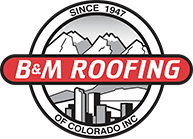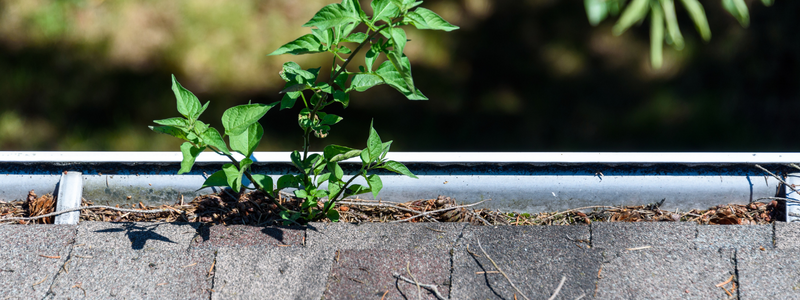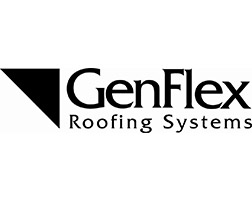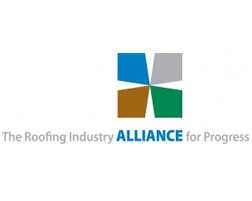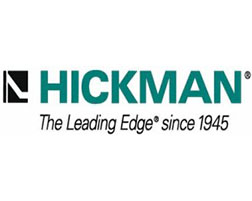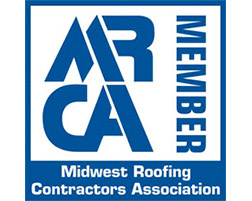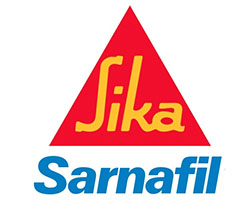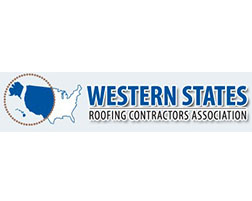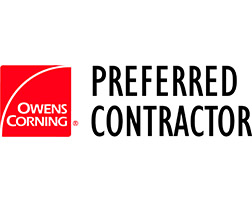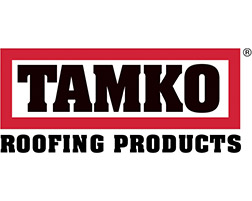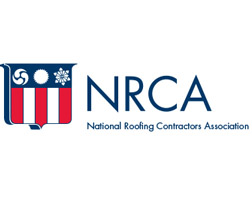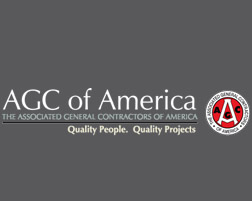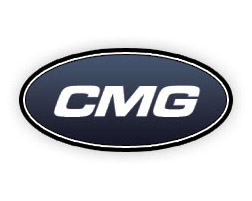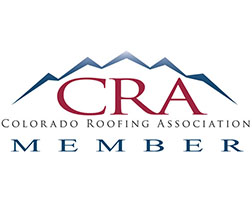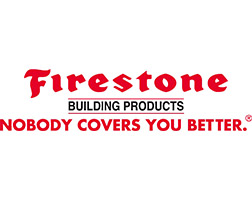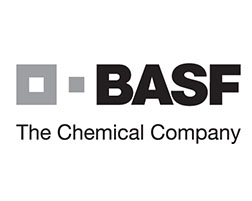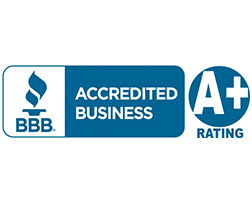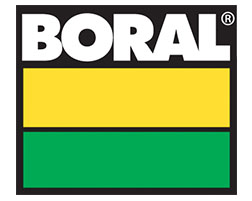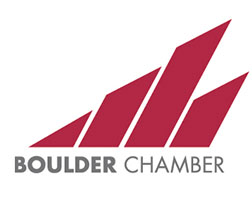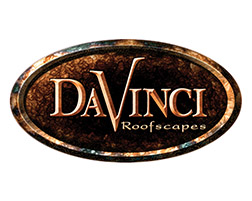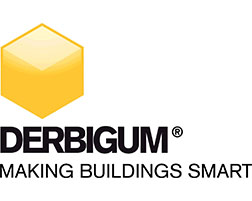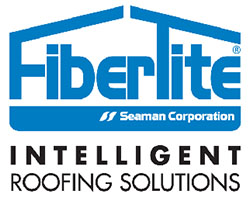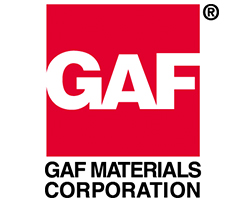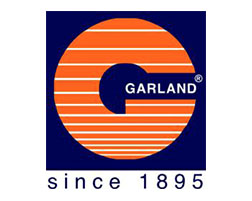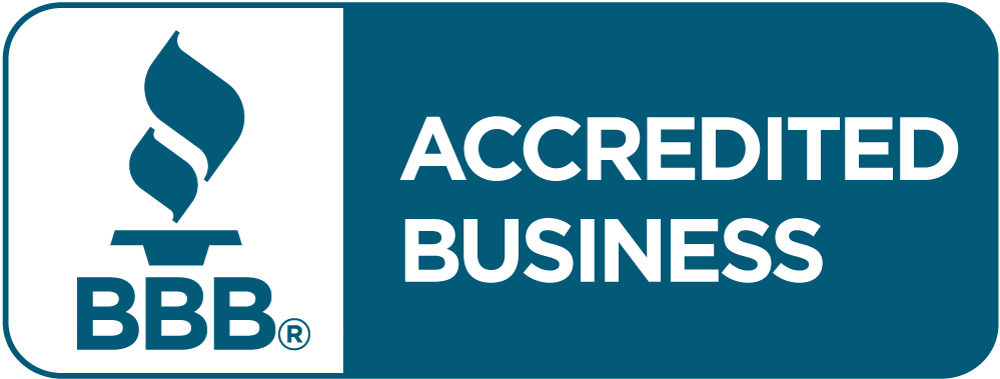Roofing Tips for Homeowners
According to research, at least 64% of Americans own real estate, and homeownership rates have increased by 65% since the 1940s in the US. This means that more and more people are recognizing the benefits of owning their own homes. Owning a home is one of the most significant investments anyone can ever make in their lives, and maintaining your home should be your number one priority. The roof, in particular, should take precedence because if left unattended, a faulty rooftop could lead to big problems in the future. To avoid unnecessary repairs and replacements, maintain it constantly by cleaning, removing debris, and even replacing any areas that may have damage. Roof maintenance doesn’t have to be as difficult as you think. You could use a professional or do this part yourself. Armed with the below easy-to-follow roofing tips for homeowners, you won’t have to take too much time out of your busy schedule to ensure that your roof is in the best condition possible.
How To Maintain Your Roof
Routine maintenance on your roof is one of the biggest roofing tips we have for homeowners.
Roofs can last for decades, but their lifespan depends on how you properly care for them. Regardless of the type of roof you have, there are several areas that you need to take care of to maintain your roof, such as; the paint, gutters, and more.
Here are a few roof maintenance tips:
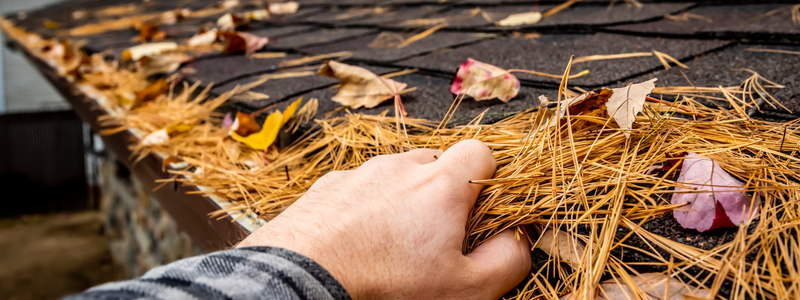
Clearing Your Gutters
You should clear your gutters to keep them free of debris. Blocked gutters can cause rainwater to accumulate on the roof, eventually leading to rust and rot. Therefore, it is essential to clean your gutters, preferably once every season, routinely, to avoid structural damage.
However, during the fall season, you should clean your gutters at least twice, especially if you live in an area surrounded by trees.
Trim Trees Found Near The Roof
It is best to trim all overlying branches found near your roof. Low-hanging components can cause significant damage, especially during storms, since they can fall on the roof. Additionally, they can scrap your shingles repeatedly and scratch away your roof’s outer protective layer.
To avoid severe damage to the tree itself, remove only low-hanging branches found within six feet of your roof.
Inspect Your Shingles Every Season
You should regularly inspect your shingles to check for any signs of damage. Damaged shingles cannot protect your roof against moisture, and you should always look for signs of damage or excessive wear and tear.
If you see any cracks, leaks, or broken shingles, you can contact a roofing company to do a replacement.
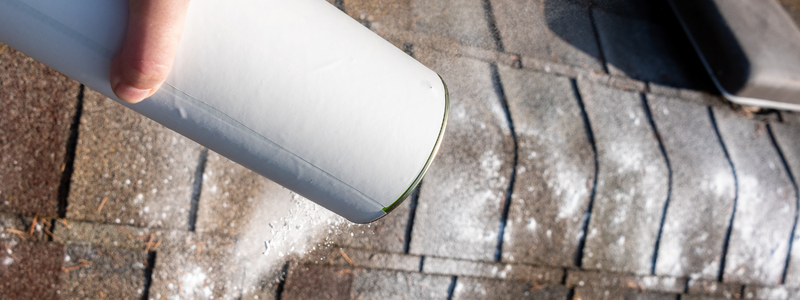
Regularly Check For Moss
The presence of moss on your roof can be hazardous as it grows and spreads, causing your shingles to lift. You should regularly check for moss or lichen growth on your roof to prevent this.
The hot seasons are awful for moss and algae, as they are known to grow under shady areas of your roof. When caught early, you can scrub and scrape them away, and once dry, you can apply preventative products that contain copper and zinc.
Remove Icicles And Ice Dams
If you’re experiencing winter or live in an area with constant snowstorms, you should remove icicles and ice dams that form on your roof. Leaving them unattended can cause your gutters to get loose due to excessive weight.
Check Your Attic’s Ventilation
Most people don’t realize that the ventilation in your attic plays a crucial part in your roofing system. Lack of proper ventilation leads to heat damage during summer. During winter, snow and ice accumulation will begin melting at the lowest layer, causing the water to refreeze around the shingles.
To check whether your attic is adequately ventilated, check for the formation of mold or ice dams.
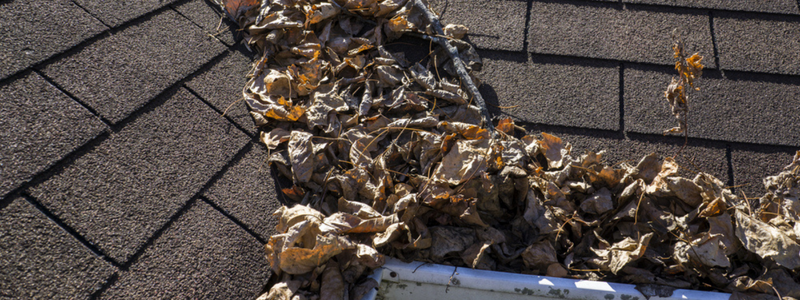
Why Should You Maintain Your Roof Regularly?
Roofs are considered the most overlooked home structures, and people pay attention only when damaged. However, like any other part of your house, the top needs regular maintenance. Here are a few reasons why regular roof maintenance is considered necessary:
It Extends Your Roof’s Lifespan
Roofs are known to last long, but when maintained regularly, they can last even longer. Timely roof maintenance can help prolong the life span of your roof. This, in turn, minimizes future or unexpected costs caused by roof damage, such as repairs and new roof installations.
It Keeps Your Family Safe
A roof stands between you and your family and harsh weather. It is essential to properly maintain your roof to protect your family from dangers such as falling tree branches, Colorado weather events, or excess moisture, which can lead to the accumulation of mold that can cause serious health concerns.
Helps Maintain Your Home’s Aesthetic Value
Not only does a well-maintained roof look better, but it also helps boost your home’s value. When you decide to sell your house, a well-maintained roof makes your house more valuable as a buyer can trust its protective ability and quality.
On the other hand, allowing roof damage to thrive for a long time will cause structural damage to your property, lowering its value.
Professional Maintenance vs. DIY Maintenance
Choosing between professional or DIY maintenance depends on you. However, you must determine which tasks you can do yourself and which ones you must leave to the professionals.
Opting to have a professional roofing company do your inspection, repair and maintenance is preferred as roofing professionals can adequately assess your roof’s condition and repair or maintain it using state-of-the-art products that will ensure its longevity.
If you decide to do your own maintenance, you should have the proper equipment, such as ladders, paints, etc., and safety gear.
B&M Roofing For All Your Roofing Tips And Needs
B&M Roofing is a dedicated roofing company in Colorado, offering expert care and services to commercial and residential products. Whether you are looking for a new roof for your office or home, or if you are trying to decide whether you need a new roof, we are equipped to handle any roofing job, and with our extensive roofing knowledge, you are assured of the best.
We handle the following industries:
- Commercial
- Residential
- Architectural Sheet Metal
- Quality Roofing Service And Repair
- Emergency Roof Repair
Please, contact us today for these and more services that we offer – even if it’s just more roofing tips for homeowners like you!
Roof Replacement: What to Expect
When it comes to your roof, you want to be sure it’s in good condition. After all, a leaky or damaged roof can lead to severe problems. However, when it comes time for a roof replacement, you might wonder what to expect. Here are some answers on roof replacement and what to expect.
Roof Replacement: What are Some Significant Causes of a Roof Replacement?
You may need to replace your roof if the material is damaged by weather, age, or improper installation. For example:
- Weather, such as hail or wind-driven rain, damages the roofing material.
- The roofing materials are damaged by fire or other natural disasters.
- The roofing materials are vandalized and need to be replaced due to holes caused by throwing things at the house (e.g., rocks).
Roofs can also be damaged in other ways, such as storm damage. For example, suppose a storm damages one side of your home worse than another. In that case, it could mean you have a structural problem worth consulting a professional.
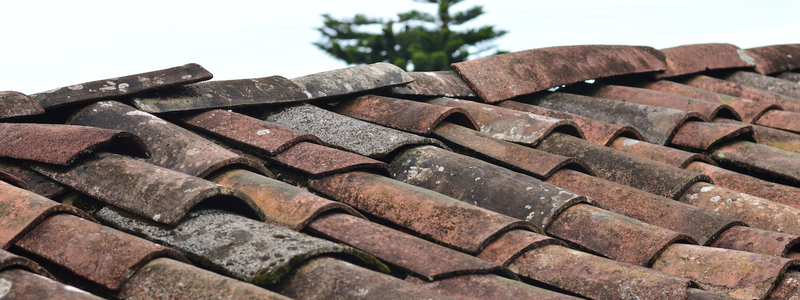
The Advantages of Getting a Roof Replacement
If you’re thinking about getting a roof replacement, here are some of the most significant advantages you can expect:
- A new roof will increase your home’s attractiveness, functionality, and value.
- It will save you money on heating and cooling costs.
- It will keep your family safe from leaks and other problems.
- It will help you sell your home faster.
- A new roof makes for a more comfortable living environment for everyone in the house—especially if it’s energy efficient!
Roof Replacement vs. Roof Repair
It’s essential to know the difference between roof replacement and roof repair. Roof replacement is complete removal of the old roof, including the decking and underlayment, and the installation of a new roof. Roof repair is fixing damaged areas of the top, such as a leaky pipe or damaged shingles.
If you have any doubt about which option will be best for your needs—and budget—it’s best to consult with your local contractor before making any final decisions.
Roof Replacement: What to Expect F.A.Q.s
How long does it take to replace a roof?
The time it takes to replace a roof varies depending on the size of your roof, its complexity, weather conditions, and your contractor’s experience.
If you have a small home with an uncomplicated roof, you can expect it to be replaced in one day. However, larger houses with complex roofs may take several days to complete. In addition, if it rains during the installation process, it may take longer than expected due to delays caused by rain or other unfavorable weather conditions.
Your contractor should plan for this possibility by ordering enough material, so they aren’t caught short when unexpected delays occur due to bad weather or other factors outside their control (like an accident on their way back from purchasing supplies).
How long does it take?
While it’s difficult to give an exact time frame for a roof replacement, the process can take anywhere from one week to one month. The roof size will significantly impact how long your project will take. Small roofs may require about one week; larger roofs may take as long as four weeks or more, depending on how many workers are working and whether or not they need extra equipment, such as cranes and scaffolding.
In addition to removing the old shingles, installing new ones on top of each other, and cleaning up after yourself when you’re done (or hiring someone else to do it), several factors can affect how long this process takes, including weather conditions.
Rainy days can slow installation if workers have limited access to certain parts of your property or have difficulty getting materials onto your roof (for example). Suppose it’s windy enough for high wind warnings in your area. In that case, you should expect delays due to safety concerns with workers installing new shingles being blown off balance by gusts coming off nearby buildings/trees, etc.
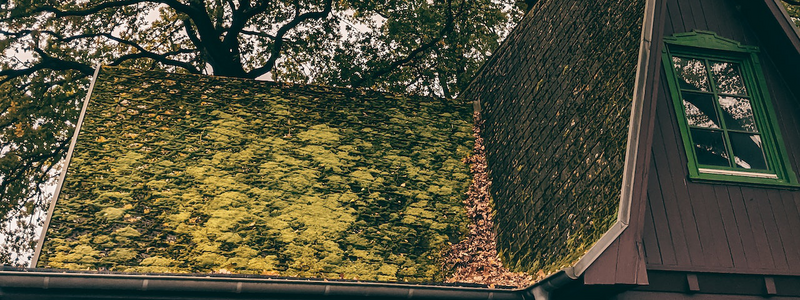
What type of roofing material should I use?
When it comes to roofing materials, you can choose from various options. For example, a shingle roof is one of North America’s most popular types of roof. Most homes have this type of roof because they’re easy to install and relatively affordable. Shingle roofs come in several styles that you can choose based on your personal preferences or budget.
Another popular choice for homeowners is tile roofs, made from ceramic or clay tiles attached to the surface using mortar or adhesive cement.
The main advantage of tile roofs is their longevity—they last longer than other types of materials due to high resistance against sunlight damage such as ultraviolet rays and wind erosion over time (it should be noted, however, that they may require more maintenance).
Wood shake shingles are another option if you want something less expensive but still attractive; these come with varying degrees of slope depending on where your house is located since some areas need more protection from heavy rainfall than others do (for example, coastal areas tend towards steeper slopes whereas that further inland tends towards flatter ones).
Do I need to do my entire roof at once?
You may have heard that it’s better to replace a roof in one fell swoop so that there are no home areas vulnerable to water damage. However, suppose your house is old and has been through many storms. In that case, you may want to consider replacing only those damaged portions of your shingles instead of going through with an entire replacement. The same goes for roofs with cheap materials or ones that have seen a lot of salt wear over time–it would be better to replace those individual pieces rather than an entire layer of shingles at once.
Will my home be protected while the work is being done?
Once you’ve signed off on the scope of the project and your roofing contractor has begun to remove shingles, they will be careful to protect any surrounding property. In addition to ensuring that nothing is damaged, this also provides an extra layer of protection. For instance, if a nail falls from your roof during replacement, it should land in a protected area instead of damaging your lawn or windowsill.
The crew should also cover all furniture on the ground with tarps or sheets so that rain doesn’t get onto it during the job. Once they are finished with the job, they will ensure that any furniture is removed before removing those tarps or sheets themselves.
What will the crews do each day?
The crew will start by removing the old roofing material, including the nails and other fasteners. Then, the workers will install the new roofing material, using nails or screws to secure it.
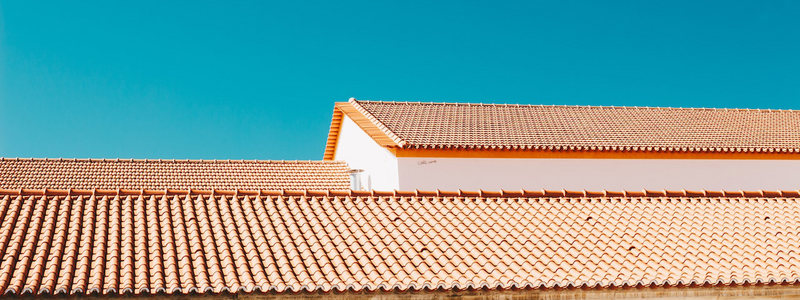
Do I need to board my pets during the replacement?
If you have dogs or larger outdoor animals that don’t do well inside, it may be best to board them or allow a friend to care for them for the project’s duration. This ensures our team can access building materials and the front and back of the house.
Will I need to prepare my yard or parking?
If you have a driveway/ garage, parking on the street so the roofing materials supplier can drop them off as close to the house as possible is best practice. It’s common for our roofing team to utilize driveways during installation.
While you may want to keep the car in the garage, if teams work over an uninsulated space, you may need to get debris on your vehicle.
Replacing your roof is a big job, but it won’t be such a hassle with the right company.
Many things can make or break a home improvement project like this. A reputable contractor will handle everything from start to finish so that you don’t have to worry about anything but enjoy your new house once they’ve finished what’s needed to do the job right. They’ll take care of everything from removing old materials (and disposal) before installing brand-new ones for maximum energy efficiency and long-term protection against weather damage, leaks, or other problems associated with older roofs on homes like yours!
Roof Installation: What You Can Expect
Roof replacement is a big decision, but it doesn’t have to be scary. The critical thing to remember is that this is your home, and you should always do what’s best for it. If you know the roof needs replacing, there’s no reason not to get a new one!
B&M Roofing Colorado: Roof Replacement & What to Expect
B&M Roofing provides quality roofing services and repairs to residential roofs to more complicated commercial properties throughout Colorado and its surrounding areas.
Our roofing service and repair specialties include:
- Roof Analysis
- Roof repairs on any system
- Leak identification
- Gutter, Downspout Repair, or Replacement
- Coating Services
- Tenant Improvements
- Preventative Maintenance
- Scheduled Maintenance Services
- Skylight Replacement
B&M Roofing is proud of and confident in the quality of our service work and the commitment of our craftspeople.
We look forward to building new relationships and forging new partnerships as we continue to grow.
If you’re still unsure how to go about your roofing problem, schedule a free inspection with us today.
How Long Does a Roof Inspection Take?
Your roof is one of the most important parts of your home. It protects you from the things mother nature likes to throw at it. Being regularly bombarded by elements, your home’s rooftop is in a constant flux of degeneration. In the case that your roof is unable to function properly, it can become the beginning of all sorts of damage which can spread all around your home. As Colorado’s weather can be especially brutal on your roof, roof inspections become crucial for those with concerns of high winds, hail, or snow. With damage not always being immediately evident, your rooftop may not show signs of damage until they have become dangerous and much less wallet friendly. A roof inspection assures you a peace-of-mind by potentially catching a problem early and not getting caught by any underlying issues. But just how long does a roof inspection take, exactly?
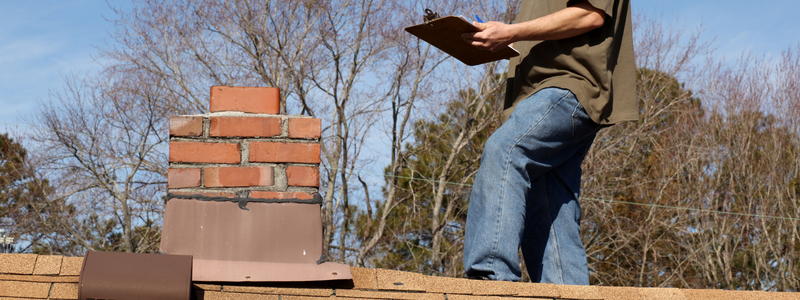
What is a Roof Inspection?
A rooftop inspection is a detailed assessment of your home’s roof by a roofing professional.
By using a range of equipment, they will inspect the roof and if they find any places of concern you and a professional can decide the next steps to take.
Why Are Roof Inspections Important?
Like maintaining your car, lawn, garden, or your health; having someone inspect your roof can help determine its overall condition (and potentially save you more stress and money in the long run).
Unfortunately, roofing problems don’t always appear as a giant leaky hole in your ceiling. Often, your roof’s problems will be much less noticeable (leaks and various insulation issues).
Colorado weather can be intense and unpredictable. With downpours of rain, wind, hail, and snow; Colorado’s weather has a large effect on the durability and quality of your rooftop.
To keep these elements from affecting your roof’s reliability, Roof inspections are critical for guaranteeing that your rooftop is managed and doesn’t develop these or other issues.
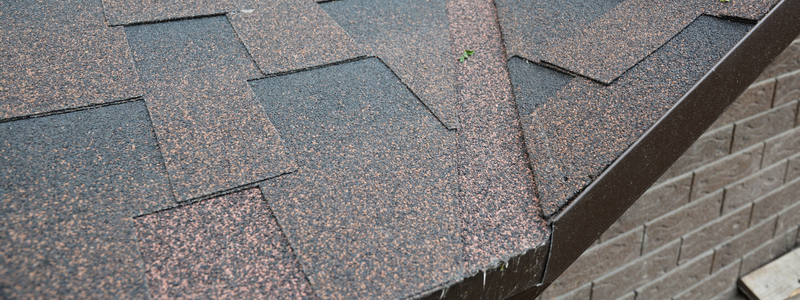
When Should You Get A Roof Inspection?
- Fall and Spring are the safest and easiest seasons to have your roof inspected, especially in Colorado, due to the comparatively mild weather and safer weather conditions.
- The National Roofing Contractors Association recommends having your roof inspected one during Fall and once during Spring.
- The National Roofing Contractors Association also recommends having your roof inspected after any significant weather event.
How Long Will a Roof Inspection Take?
Depending on the size of your home, the roof inspection itself should only take between 45-60 minutes.
However, various factors can make the process a little longer.
These factors include:
- The Kind of Roof You Have: There are many roof designs and each design takes a different length of time to inspect.
- The Square Footage Of Your Home: Larger homes will naturally take longer to properly inspect.
- Accessibility Of Your Roof: Some areas of your roof may be more difficult to access than others.
What Is Checked During A Roof Inspection?
Your roof inspection shouldn’t be a disruptive experience.
The inspector is only looking around for signs of a potential issue. Nothing more than a ladder being placed against the house and footsteps are typically all you will experience.
During the roof inspection, our roofing professional will conduct a checklist:
Surface Assessment
Discoloration or warping is looked for since this can be a sign of water damage.
Hail damage can be hard to locate so hail-strike damage is assessed.
Ventilation
Airflow in your attic is extremely important and professionals can determine whether your vents are working to the standard your home requires.
Structural survey
It is important to get past the superficial damage and expose any structural weakness your roof may be experiencing. Promptly identifying these kinds of problems and approaching the issues are essential for home maintenance.
Insurance Claims
In the event of your roof being damaged, a professional will be needed to properly describe and itemize any damage.
A professional will be your guide through the process of an insurance claim.
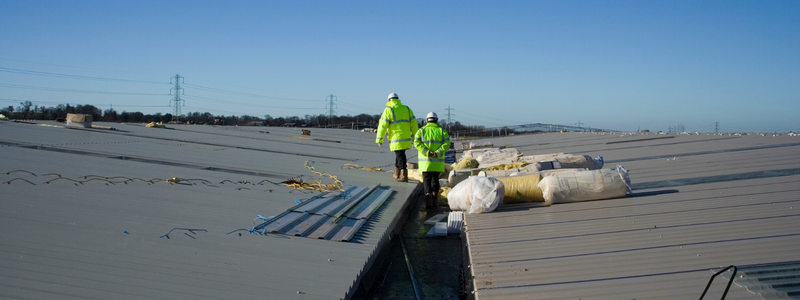
B&M Roofing: Colorado’s Professional Roof Inspectors
B&M Roofing of Colorado provides free, no-obligation professional roof inspections to homeowners in Denver and Boulder.
As Colorado residents, we know the weather and elements can have an effect on your roof. Being able to spot old, weathered, or damaged roofs is our speciality.
If during a roof inspection; we find that we can save you money, we absolutely will.
If you need repairs after an inspection, we will absolutely say so.
On the flip side, if you DON’T need any repairs at all, we will absolutely say so.
It’s about protecting you and your home…AND your wallet.
Request a visit from our inspection team with our online form, or by calling 303.443.5843.
How Long Does It Take To Replace A Roof?
As you sit; watching the pouring rain through your living room window and enjoy the bountiful protection your household provides your family and yourself from Mother Nature’s fury, you are overwhelmed with gratitude for the comfort that having a rooftop overhead provides.
Yet, as lovely as Colorado truly is, that fury and mixture of forces are always ready to bang at your doorstep. But your rooftop gets the brunt of that.
Considering the need for a strong rooftop as fundamental for keeping everyone safe, you notice the roof looking a bit old/worn (cracks, leaks/water damage). Maybe it’s that time you finally replace your roof. After all, nothing lasts forever; much less your roof.
Most homeowners can enjoy an average of 30+ years and upwards to 50 years in the case of a solid roof job.
But you are definitely thinking it’s time to replace. Replacing your rooftop companion can seem (in theory) like a huge bothersome task and how long does it take to replace a roof exactly?
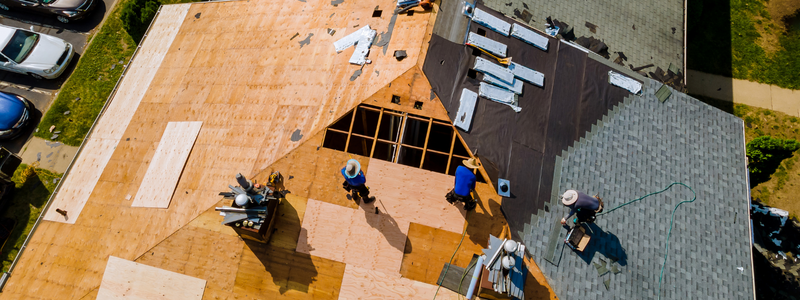
Situations Which Require A Roof Replacement
So what are some situations which may lead to you needing a roof replacement?
Shingles Missing/Curling
Asphalt shingles have a long lifetime (roughly, 20-50 years) but when they go downhill, they tend to curl up which permits water to saturate into the space underneath.
In the event that there is excessive curling or the roof is missing shingles, then a roofing replacement may be required rather than a minor fix.
Damaged Flashing
Flashings are the thin metal strips that lie along the joints of your roof. These can become worn/damaged in the long run, which can prompt leaks in your roof.
If you notice that you have damaged flashings, that is an indication your rooftop may need to be replaced.
Discolored Walls or Ceilings
If you notice signs of water stains and discoloration of your walls or roofs, this is very nearly a guarantee that there is a significant issue with your rooftop.
The Roof Is Just Plain Old
In the event that you have an old rooftop that is on the older end of 25-50 years of age, it might be wise to have a roofing professional determine whether or not it needs to be replaced.
The age range is a big deal because your rooftop’s normal life expectancy will change contingent upon the materials utilized and where you reside.
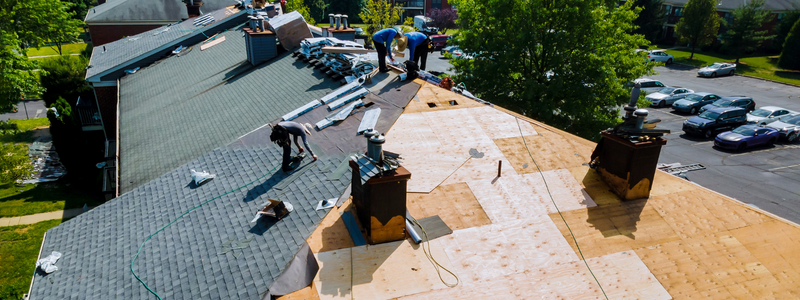
So, How Long Does A Roof Replacement Take?
Typically, you can expect a roof replacement to take about 3-4 days tops. However, there are a few factors that weigh into how long it takes to replace a roof.
These are the factors in determining the length of any roof replacement.
- Home Size – It’s really no secret that if you have a larger home, the process of replacing your roof becomes a bit longer. In some cases, larger home roof replacements can take a few days. Smaller houses can have rooftops replaced within the day with good weather conditions.
- Weather – Plan a roof replacement project around the weather. Colder weather months and stormy seasons could delay the roof replacement. Try to avoid replacing your rooftop when you anticipate downpour, snow, or incredibly hot/cold temperatures. When weather conditions aren’t cooperating, roof replacement time becomes much longer than what is typical.
- Rooftop Accessibility – The ability for a contractor to access your roof is big in calculating the amount of time it requires to replace your rooftop. For example: if your rooftop is surrounded by shrubs. landscaping, or fences; it will be harder to access than a property without such barriers. Additionally, it may be harder to access your roof if you live on a road with thickly-packed groupings of houses.
- Roofing Materials and Design – Shingles come in a variety of materials. Every material requires a different frame of time or techniques used for installation.
- Asphalt Shingles – Asphalt shingles are the most popular roofing choice amongst homeowners. Asphalt is a composite material made from an accumulation of minerals. This makes for a very sturdy roofing material in all weather conditions. Asphalt shingles tend to have a lifespan of 15-25 years. They are also the most affordable, durable and easy to install. Installation is typically finished 1-2 days.
- Wooden Shingles – Wooden shingles are of the most aesthetically pleasing of the types of shingles. They tend to have a lifespan of 30 years and are known as more environmentally-friendly due to being biodegradable and coming from sustainable sources. Wooden shingles are more expensive than other materials. They are not recommended in areas known for strong storms. Wood is also highly flammable and prone to damage from insects such as termites. Installation is typically finished 2-5 days.
- Metal Shingles – Metal shingles are a highly durable and stylish choice for your roof. They tend to have a lifespan between 40-70 years. Metal roofing provides protection from the harshest weather thrown at it and a major resistance to fire. These shingles are amongst the most expensive and also require a bit of maintenance to prevent metal corrosion. Installation is typically finished 2-5 days.
- Slate Shingles – Since slate is made from stone, they are durable. They are not easily damaged by nature’s elements, though they can still crack. They are also fireproof and protect from high winds. Slate shingles are more expensive but tend to have a lifespan of up to 125+ years. Installation is typically finished 6-7 days.
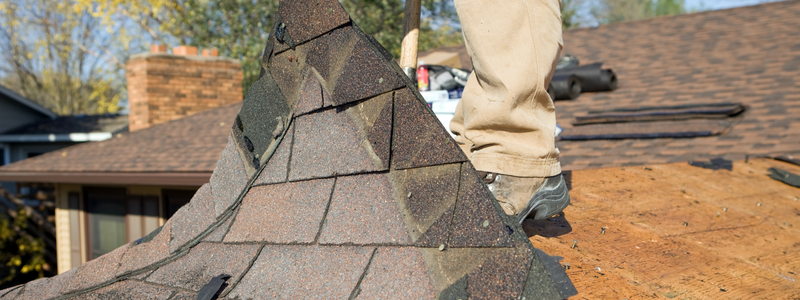
Ready for a Roof Replacement?
B&M Roofing provides quality roofing services and repair to residential roofs all the way to more complicated commercial properties throughout the state of Colorado and its surrounding areas.
Our roofing service and repair specialties include:
- Roof analysis
- Roof repairs on any system
- Leak identification
- Gutter, Downspout Repair or Replacement
- Coating Services
- Tenant Improvements
- Preventative Maintenance
- Scheduled Maintenance Services
- Skylight Replacement
B&M Roofing is proud of and confident in the quality of our service work and the commitment of our craftsmen. As we continue to grow, we look forward to building new relationships and forging new partnerships.
If you’re still unsure how to go about your roofing problem, schedule a free inspection with us today.
Roof Pitch Examples
The roof pitch of your home decides its lifespan, cost, and appearance. In Colorado, keeping your home safe from water, ice and snow is essential.
“Roof pitch” is sometimes referred to as “roof slope.” The term refers to the steepness of a roof measured as a rise in inches for every horizontal foot of length. An example is a 6/12 roof with a vertical height of six inches per horizontal foot. In this article, we will give you roof pitch examples and information for you to consider when making repairs.
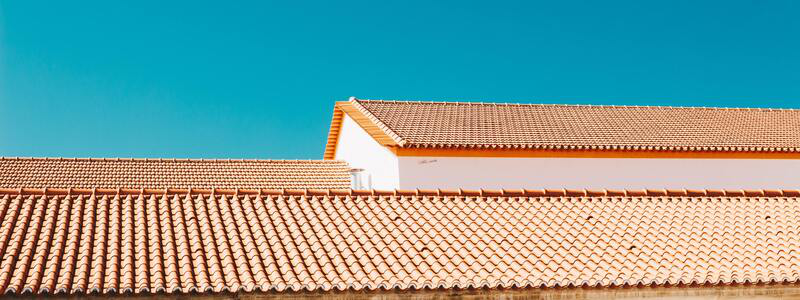
What Are The Most Common Types of Roof Pitch?
Different structures come with different types of roof pitch. It can never be assumed that the pitch of one home or business will work on all buildings. The pitch will also determine which materials can be withstood by the structure. Roofs with higher pitches work best with shingles, tiles, shakes, asphalt, or wood, while low-slope roofs allow for roll roofing with exposed nails. The following are the most common types of roof pitch examples:
Residential
Residential roofs usually have conventional sloped roofs, meaning the roof has a pitch between 4/12 and 9/12 on most homes. Roofs that have angles exceeding 9/12 are considered steep slope roofs.
Commercial and Industrial
Commercial buildings will typically have low slope roofs. These roofs have pitches between 2/12 and 4/12. Flat roofs have a low rise, most commonly found in industrial facilities such as factories and warehouses. Although, the minimum slope of a roof must be at least ¼” to ensure proper drainage.
Different Examples of a Pitch Roof
Roof pitches boil down to the architecture of the building and what it’s being used for. Typically, hip and gable roofs are most popular in homes and residential structures, whereas flat roofs are seen in commercial and residential buildings. Here are some roof pitch examples:
Hip Roof
A gable roof consists of two faces whose upper horizontal edges meet to form a triangular-shaped ridge. This is the most common type of roof used in residential areas, which makes for exceptional water drainage, reducing the risk of water buildup.
Gable Roof
Hip roofs are pitched roofs with more than two surfaces. Hips are the term that refers to the outer angles two tops create, which are usually more than 180 degrees. This roof pitch has all sides sloping downwards, meaning a hip roof has no gables.
Mansard Roof
Mansard roofs are commonly seen in French architecture and contain unique design elements such as windows and attics. Every four sides of a mansard roof have two pitches. Typically, the lower pitches are steeper than the upper pitches.
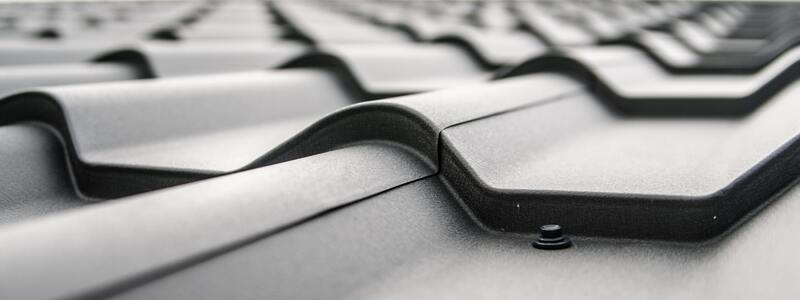
Flat roof
Flat roofs have a pitch of up to 10 degrees, which is the minimum slope a building needs for water to drain. As mentioned previously, flat roofs are mostly seen on industrial and commercial buildings. Still, they are also becoming popular in residential buildings such as townhome complexes, where they are converted into common areas such as patios and green spaces.
Mono-pitch roof
Mono-pitch roofs contain a single-pitched roof surface and only slant in a single direction. This type of roof pitch is usually seen in modern residential architecture. Mono-pitch roofs consist of rafters and beams to support roofing materials, and because there is only one flat surface – it’s easier to build.
Low vs. Conventional vs. Steep
When it comes to the steepness of your roof, there are three categories. These are:
Low-slope:
- 1/12 Roof Pitch
- 2/12 Roof Pitch
- 3/12 Roof Pitch
Conventional:
- 4/12 Roof Pitch
- 5/12 Roof Pitch
- 6/12 Roof Pitch
- 7/12 Roof Pitch
- 8/12 Roof Pitch
Steep Slope:
- 9/12 Roof Pitch
- 10/12 Roof Pitch
- 12/12 Roof Pitch
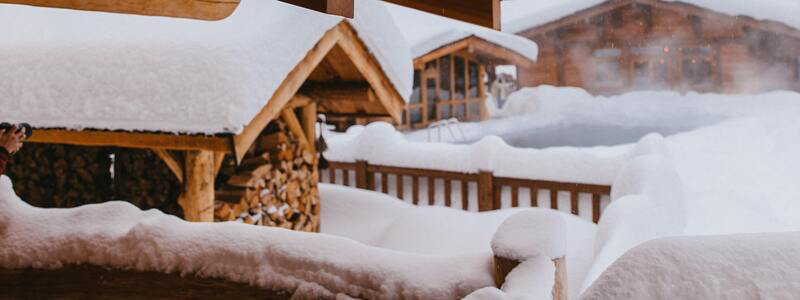
How Can I Tell What Pitch My Roof Is?
I very great way is to grab a tape measure and level. The level should be at least 12” long. Safely climb your roof and place the end of your level against the roof surface and hold the level straight until the bubble is centered. Then, measure the vertical distance down from the 12” mark on the level down to the roof using your tape measure.
Climbing your roof can be dangerous, and it’s essential to take safety precautions. Sometimes, it’s best to leave it to the experts to prevent accidents and injuries.
B&M Roofing – Colorado’s Most Trusted
B&M Roofing is Colorado’s most trusted and knowledgeable roofing company. We offer expert roof services and care for commercial and residential buildings across Colorado and nearby states. Our commitment to quality has been the B&M Roofing standard since 1947.
Contact us today for a free assessment if you’re looking for a new roof or need some repairs. Our team of experts can evaluate the right services for your roofing needs. Whether it’s a new roof installation or repair job, we promise to work until you are completely satisfied.
For more information about roof maintenance, repair, or replacement. Call us at 303-816-0068 or fill out a contact form.
Commercial Roof Types
A roof may seem like just a roof, but in essence, a roof is so much more. It not only protects you from the weather but also enhances the look of your home. You can include roofing as part of your decor to achieve a look that really stands out, especially now that you can get different colored roofs.
Roofs can be classified as either residential or commercial. They of course do the same thing, but a commercial roof is much larger than a residential roof and it is primarily used for commercial purposes. It can either have a lower slope, or it can be entirely flat.
Which Are The Most Common Types of Commercial Roofs?
The typical commercial roof types designs will require you to consider factors such as the weight of equipment that’s housed on the roof and the need to cover a much larger area. Residential roofs do not have much design worry and they are typically easy to maintain, replace and repair.
Durability, Cost, and Energy Efficiency of Commercial Roofs
This is actually the trifecta of having a commercial roof. It should be durable, cost-efficient as well as energy-efficient.
When properly installed, a commercial roof has a lifespan of over 50 years, although this depends on sub-roof and climate conditions, which could either increase or decrease the estimates.
For years now, people have been extremely concerned about the efficiency of commercial roofs, and they have been adding more and more parameters to make them energy efficient. For a business owner, energy efficiency is of utmost importance as this means that the roof would save them some money in the long run.
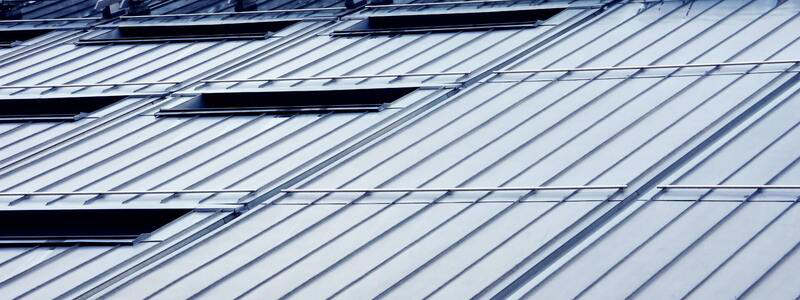
The cost of installing a new commercial roof will certainly be at the back of your mind. They can be expensive, but of course, this will depend on the type of roof you choose. Some of them will be extremely costly to install, but easier to maintain, while others are likely to be cheaper to install but more expensive to maintain.
Here’s a look at the different commercial roof types:
Metal Roofs
Metal roofs are a popular option for commercial roofs and this is usually due to their high lifespan of between 40 and 60 years. There are many different types of metallic roofing systems available and some will even come with an integrated solar or snow system that’s removable.
The most common types of metal roofing materials are:
- Aluminum, tin, and zinc
- Copper
- Corrugated galvanized steel
- Coated or stainless steel
- Tile sheets
Metal roofs usually have an attractive and finished look with a strong fire-resistance rating. They are also more sustainable and stronger than other roofing options.
The only downside to metal roofs is that they are susceptible to corrosion, and because of this, they should have a protective surface layer added in order to manage the damage from moisture, exposure, and other environmental factors.
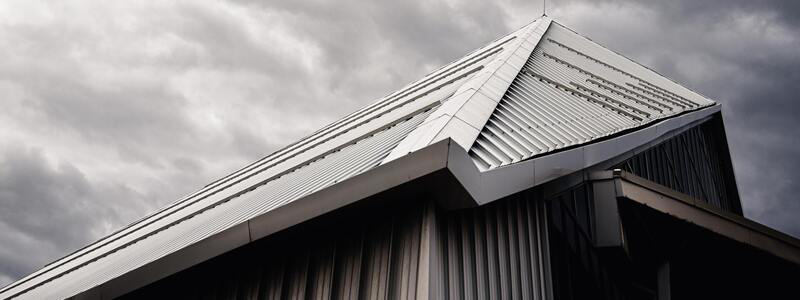
Built-up Roofing Membrane
A built-up roofing membrane has a life span of more than 20 years and it’s made of alternative gravel and tar layers. The total number of layers affects its cost and durability. The roof is inexpensive and very easy to manage and it is actually one of the most flexible and oldest roofs available.
It holds up well with foot traffic, but it all depends on the stability of the understructure that has been installed to carry movement and vibrations. It is also UV resistant and can be coated in order to reflect the heat.
The main downside to the built-up roofing membrane is that it has the shortest lifespan compared to other types of roofs and it is also difficult to identify a leak if there’s ever one on it.
Green Roof
Nowadays, green roofs have become extremely popular as they can last a long time, between 30 and 50 years. They mostly consist of a tough waterproof membrane that’s normally covered by green plants.
These are sustainable masterpieces that help improve the air quality and can often add a green relaxation space for people to enjoy.
The main advantage of a green roof is that it is environmentally friendly and can really improve the aesthetics of the building. It often comes with sophisticated drainage and water management system, with sensor capabilities.
The main downside is that it requires regular, ongoing monitoring and maintenance of the plants.
Thermoset EPDM Membrane Roof
EPDM stands for Ethylene Propylene Diene Terpolymer, which refers to a roll-based and durable synthetic rubber roof membrane that’s also known as Thermostat roofing. The EPDM offers strong resistance to pollution and sunlight, and it is versatile, easy to install, and long-lasting.
EPDM roofs come in either black or white rolls and in addition to their resistance to the sun and pollution they are also able to withstand most solvents such as acids and alcohol.
The downside to EPDM however is that they are not the prettiest of roofs and they can easily puncture – this is when debris falls on the roof or when people walk on them.
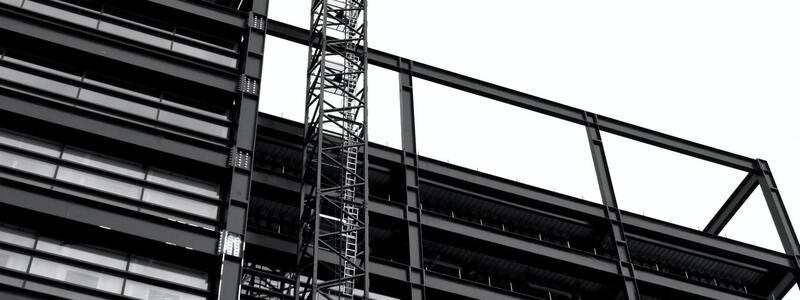
TPO and Thermoplastic PVC Roof Membranes
TPO or Thermoplastic Polyolefin and PVC or Poly Vinyl Chloride roofs are materials used in roofing that are extremely resistant to adverse conditions. These conditions include chemicals such as oils and fats, UV lights, and bacterial growth.
These can easily damage the roof membranes. They are also heat-reflective, lightweight and puncture resistant.
Other benefits of PVC and TPO roofs are that they have strong air-welded seams, tolerant to high winds and high temperatures and they are also fire-resistant.
The main downside is that; due to their immense popularity, there are several fake TPO products on sale that are made of poor and cheap materials. Many smaller manufacturers are trying to create their own product lines that make it easy for consumers to get dupped.
What Is The Difference Between TPO and EPDM?
The main difference between TPO and EPDM is that TPO reflects the sun and allows the commercial air conditioners to work efficiently, while EPDM comes with a dark surface that absorbs heat in summer conditions and forces the cooling system to work harder.
Shingles
This is a common material used with residential roofs. Shingles can however still be used in commercial roof types but only those that have steep roofing lines.
There are many different types of shingles used in roofing, such as architectural, asphalt, plastic, ceramic, and slate. They are affordable, easy to install, and extremely versatile.
The downside to shingles is that depending on the type you use, the lifespan usually isn’t that long compared to other roof types and shingles tend to be more susceptible to moss and mildew if you happen to have your building near a shaded area.
The B&M Roofing Company
At the B&M roofing company, we offer solutions for both commercials as well as residential roofing in Colorado. We have many years of experience in this field and our customers trust us explicitly.
We offer specialty products that can help with your home or business across the state and all nearby areas. You can take advantage of our RoofSave option today, which offers a comprehensive management program with a cost-effective approach to roofing in Colorado.
Roof Restoration vs Replacement
Let’s just face the truth – the cost of fixing or replacing your roof isn’t something anybody wants to contemplate happening to them. It is perhaps one of the largest home repairs people can encounter as a homeowner.
A sturdy and reliable roof protects you and your family from the weather and various other forces of nature. Your rooftop should be a constant on your checklist of top home-owning concerns. After all, a solid roof overhead is essential for keeping you and your loved ones safe and secure.
Roof maintenance requires a regular cleaning/visual inspection. When inspecting your roof, see if you can spot any damage and assess the severity of the damage.
When you address rooftop damage early, you spare your roof from any additional damage it might receive. Saving yourself time and money.
So, when your roof starts to show signs of wear and tear, you will be presented with two options: roof restoration vs replacement.
But should you do a roof restoration or a roof replacement?
What is the difference between the two?
Let’s look at the two and see which option might be best for you.
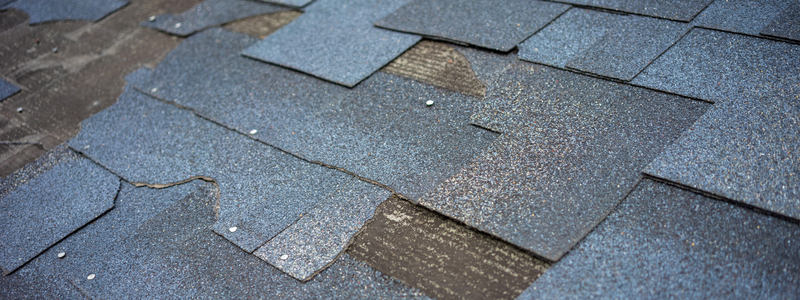
What is Roof Restoration Exactly?
Roof restoration incorporates replacing broken tiles, deep cleaning and painting over worn-out areas of the roof, and any other maintenance your rooftop requires.
This is an appealing option for commercial building projects which may not hold the kind of budget for a complete roof replacement.
In the event that you’re thinking about restoring your rooftop, there are sure instances when roof restoration is a much better option for you than replacement.
The following are some instances where roof restoration may be a better option vs replacement:
Hail damage
Colorado summers are very well-known for bringing a good amount of hail. The state even brings in some of the biggest pieces of hail recorded. These kinds of storms can bombard the roof of your home and in some cases, cause massive damage to the surface of the roof. Whole rooftops aren’t typically destroyed, allowing you to restore the specific sections harmed.
Water damage
During the rainy and snowy seasons, water can find a way into the shingles, felt underlay, and occasionally through the decking of your roof. With the water on the roof typically being able to slide off, instead, water sinks into the roof.
This can be extremely damaging to rooftops in Colorado. Colorado can dump snow or rain in large quantities during certain times throughout the year. Water accumulates on a roof and cannot always evaporate quickly enough to rid itself of the excess water. If it’s a particularly cold day in the state, water will seep into various cracks and openings in the roof, freeze, and then expand as the water forms into ice. Water/ice and roofs do not mix well together.
High-wind damage
Another weather trait Colorado is known for is producing high-speed winds. High-speed winds are another instance that can damage your roof.
Speedy gusts of wind can pick up and remove pieces of your shingles. Since wind at high speeds has the ability to push over trees and slam various debris into your roof, this can lead to major damage caused.
In contrast to a complete roof replacement, a roof restoration is considerably friendlier on the ol’ wallet. The process requires fewer materials and labor than a roof replacement.
A restoration, when done properly, can extend your rooftop’s life by up to 10 years.
The Benefits of Roof Restoration
- Restoration is a more affordable option compared to replacing your entire roof.
- A restoration of your roof is a much more environmentally-friendly option due to reusing parts of the roof.
- Restoration improves the quality of your current roof and doesn’t start everything from scratch.
- The lifespan of your roof extends to up to 15 years after a restoration.
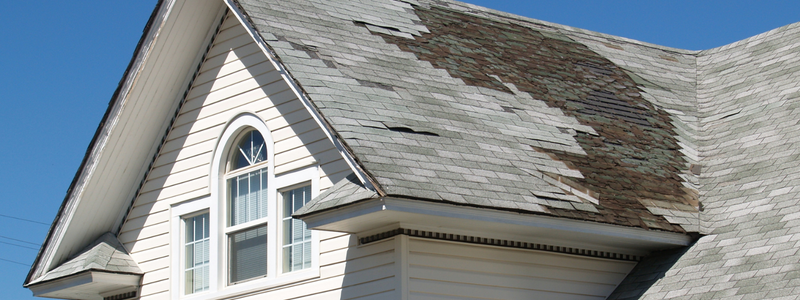
Okay, What About A Roof Replacement Then?
When rooftop damage is severe enough, all materials are completely removed and new installation is required. This is a roof replacement, when a roof is partially or completely replaced.
At the point when the damages on your rooftop become significant enough, all materials are removed thoroughly and a new roof installation begins. When a roof is partly or completely replaced, this becomes a roof replacement.
If you’re probably having persistent roof-related problems like water leaks, replacement becomes the option when your rooftop is well beyond any kind of repair. These kinds of roof ailments can lead to the roof collapsing.
It is kind of a rule of thumb that your roof has about 20 years before needing a complete replacement.
In this amount of time, roofing is known to show mold, moss, bald spots, cracked/curled shingles, and much more. These are potent indicators that your roof more than likely needs to be replaced.
A complete roof replacement is certainly more expensive than a roof restoration but sometimes you have no other option but to do a replacement for roofs with extreme/irreversible damage. Long term, it’s a smart, money-saving investment.
On the bright side, your new roof will allow you the reassurance that your household is protected and will add overall value to your home.
The Benefits of Roof Replacement
While it may seem like the bigger headache, a roof replacement isn’t always a bad thing. If it’s happening sooner than every 15-20 years, you may need to reconsider options, but there are many advantages of a full roof replacement.
- A complete replacement of your roof will last longer than a restoration.
- Replacement addresses issues like underlying rot, making for a sturdier and safer rooftop.
- Replacement allows for a fresh start in your roof maintenance and enables you to identify early signs of rot/sagging caused by water damage.
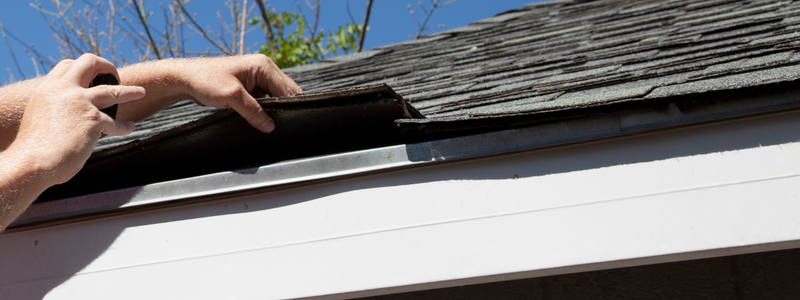
Is It A Better Idea To Repair Or Replace Your Roof?
There are going to be many factors in determining if your roof needs a restoration or a replacement.The material types used, climate zones and the roof’s age are all ultimately going to impact whether your roof can be restored or should be replaced altogether.
A rooftop with lots of documented problems like leaks, moss/fungus growth which leads to overall decay, and any moisture found in the insulation or deck beneath the roof, will need to have a roof replacement. Restoration just isn’t an option when decay becomes present.
When your rooftop is hit with various weather conditions and damaged; a restoration is probably what you would want to go with.
With a better understanding of roof restoration vs. replacement, you can make a more informed decision on which route you may need to take. But, you are not alone.
B&M Roofing and Roof Restoration vs Replacement
B&M Roofing has been providing the best commercial/residential roofing restorations and replacements since 1947. We bring superior knowledge and experience in metal roofing, shingles, tile, low slope roofing, asphalt, and much more. Our inspections help to give you the best options on roof repair, or roof restoration vs replacement and pros and cons of each option.
If you believe your business or commercial roof is in need of repair, please contact our Colorado roofing company for a free assessment.
With our knowledgeable professionals, we are dedicated to ongoing support. We promise to leave you feeling assured that your roofing needs are our #1 priority.
Rubber Roof vs Shingles
Choosing the suitable roofing material is one of the most important decisions you can make for this scale home improvement project. If you’re looking to replace your roof, consider the available material options and decide which is best for your needs. You may be looking at a rubber roof vs shingles.
Rubber roofing has increased in popularity due to its ability to withstand extreme weather and require little to no maintenance. It’s also a more eco-friendly option than traditional materials, making it perfect for homeowners who seek durability and sustainability in their choice.
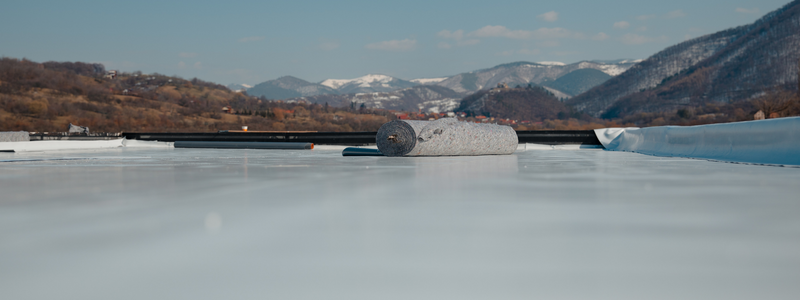
What is Rubber Roofing?
Rubber roofing material is usually made from recycled tires, sawdust, and slate dust. These shingles are made from up to 95% recycled material, making them more eco-friendly than traditional roofing materials. Rubber roofs are also known to be fire, impact, and wind-resistant.
Rubber roofing comes in three types (EPDM, TPO, or PVC), and they are made from a synthetic material known as ethylene propylene diene monomer.
Is a Rubber Roof Better Than Shingles?
When it comes to a rubber roof vs shingles, rubber roofing primarily appeals to homeowners seeking a sustainable, durable, and energy-efficient roof option.
Durability
Rubber roofs are less likely to chip, rust or dent because they are more resistant to moisture, mildew, and pest, making them the more durable option.
When debating on rubber roofing, consider the weather in your area. If you live in an area that receives a lot of precipitation, water is less likely to seep between rubber shingles than traditional asphalt. Additionally, If you have a flat or low-sloped roof, you might be better off opting for rubber shingles. Traditional shingles on low or flat roofs can cause water to collect and ultimately cause both exterior and interior damage.
Eco-friendly and Energy-Efficient
Rubber shingles are made from approximately 95% recycled content, usually from reclaimed tires, and are 100% recyclable at the end of their lifespan, making them the more environmentally-friendly choice. Rubber shingles are also energy-efficient because they help insulate homes more effectively, reducing energy use during the winter and summer — which can help reduce heating and cooling bills.
Design
Rubber roofs also come in various shapes, sizes, and colors, with some styles even mimicking slate or wood shakes. Therefore, homeowners can still customize their exterior, even when opting for a rubber roof.
Smell
Essential factor homeowners should consider before deciding on rubber shingles is the odor. After installing your rubber roof, there might be a lingering rubber smell, which can be offputting to some. However, manufacturers claim that the smell should disappear once shingles become gradually exposed to the elements.
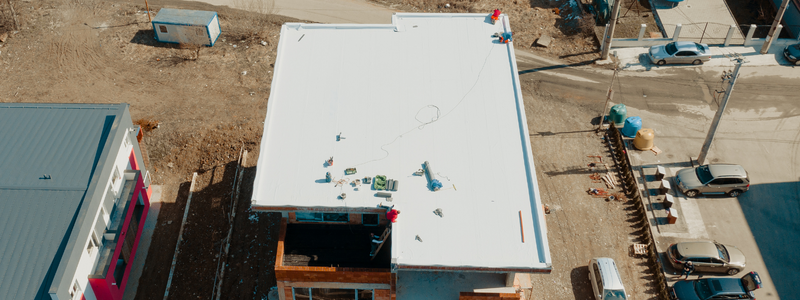
Is a Rubber Roof Cheaper Than Shingles?
A rubber roof will cost you more than traditional asphalt shingles. However, this is only initially.
Opting for rubber shingles will cost you three to four times more than you would pay for asphalt shingles. However, asphalt shingles will come with their costs, such as repairing own shingles and installing roof trusses or rafters.
The reason why rubber roofs cost significantly more is that they are so durable. They also require less maintenance and will most likely not need any repairs. On top of that, rubber roofing is generally more energy-efficient than traditional roofing, meaning homeowners can save more on heating and cooling efforts.
If your rubber roof installation job is done right, you’ll decrease the risk of damages such as cracking and leaking. However, most cracks and leaks (if any) can be fixed with a latex sealant.
Traditional shingles are more susceptible to damages such as mold, mildew, and cracks, which can cause exterior damage and damage the inside of your home. Repairing traditional shingles can be costly, depending on the severity of the wear.
How Long Does a Rubber Roof Last?
Roofing can show signs of damage such as peeling and curling when exposed to enough sunlight and precipitation. Asphalt roofs will typically see signs of wear faster than a roof with rubber shingles because rubber roofing is resistant to thermal shock, which prevents it from becoming brittle due to extreme temperatures, ultraviolet radiation, and cyclic fatigue. The material lasts up to 75 years with little to no maintenance, while asphalt roofs are known to last for up to 20 years.
Are Rubber Shingles Worth It?
In Colorado, we have 300 days of sunshine which means roofs are exposed to significant heat and UV radiation. In addition to that, many parts of the state see heavy precipitation during the winter months. Rubber roofing materials are known to withstand Colorado’s weather challenges.
If you’re looking for a one-and-done job, rubber shingles are definitely worth it. Despite higher initial costs, rubber shingles tend to be more durable and require less maintenance, making them more cost-effective in the long term than traditional shingles. Rubber shingles are also better for the environment than shingles made with conventional materials, which can help reduce the individual carbon footprint of your home.
If you’re deciding between a rubber roof vs shingles, a rubber roof has many more benefits that might be worth looking into further.
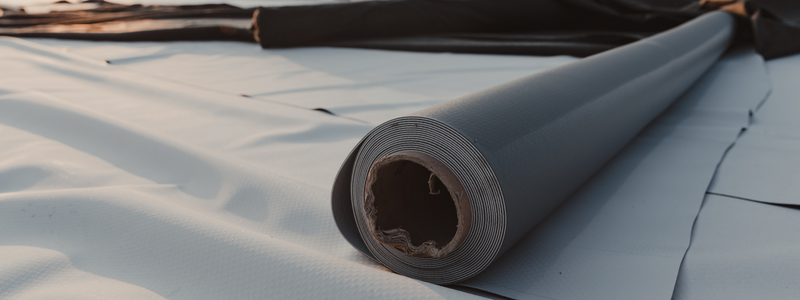
B&M Roofing – Colorado’s Most Trusted Roofing Experts
Here at B&M Roofing, we understand the importance of choosing the right material for your roof – and we’re here to help! We work with a wide variety of rubber roofing materials and we’ll guide you in making the best decision for your home and roof.
We have been providing reliable service to thousands of Colorado homeowners since 1947. Our licensed and insured team of specialists has a proven commitment to excellence and dedication to safety. We will ensure you’re 100% satisfied with the final product.
Call us at 303.444.5843 or fill out this online form to get started on your roofing project!
Wind Damage To Roof
If you’re a homeowner or owner of a commercial building, you probably realize that your roof is one of the most valuable aspects of your property, and maintaining it is critical. You’re also aware that if your roof becomes damaged, it can be urgent to fix before more problems spread through the rest of the structure.
But if you aren’t a roofing expert, how do you know what is considered wind damage to roof?
Obvious weather elements that cause destruction, such as rain or hail, are just the start of a homeowner’s roofing concerns.
A widely ignored type of damage from storms is wind damage.
Strong, violent winds create stress points on a roof that eventually become compromised. The good news is that immediately replacing damaged roofing systems will save your home from water damage, and save you the costs of much more expensive repairs.
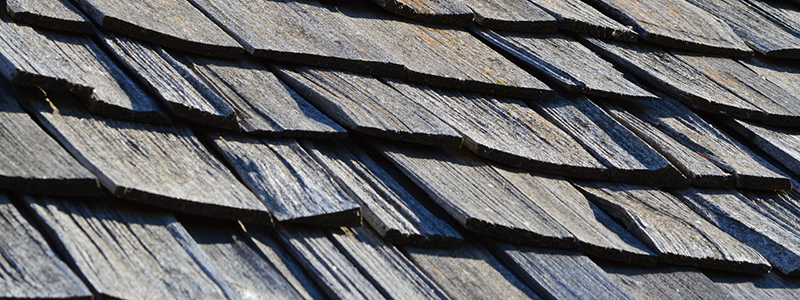
How Wind Damages Your Roof
Strong winds can move in many directions in a storm, catching corners and perimeters of your roof. Anywhere the roofing material is even a little loose, the wind gets below and pries it up. The next time a storm strikes, the lifted materials have surface area for the wind to catch onto. It’s a self-reinforcing reaction once the wind starts damaging shingles, with each successive storm further damaging your home. Once shingles are damaged, you risk water damage, so you can’t afford to ignore these signs of wind damage to a roof.
Signs of Wind Damage to a Roof
Wind-damaged roof appearance varies by the type, but mainly focuses on a few main areas:
- Shingle Damage
- Wood Shingles/Shakes Decay
- Flat Roof
- Flashing
- Roofing cement
Shingle Damage
Missing shingles are one of the easiest to determine signs of storm damage to the roof. But even if they aren’t missing, be on the lookout for any noticeable damage. If they look too smooth, that is an indication that they have suffered some loss of granulation. Also, watch for any curling or bowing indicating something is structurally wrong with the shingle. Obviously, cracks or breaks are big red flags.
A good general rule is that if your shingles don’t look smooth and uniform, there is a high likelihood they are damaged and could lead to worse problems if not repaired immediately.
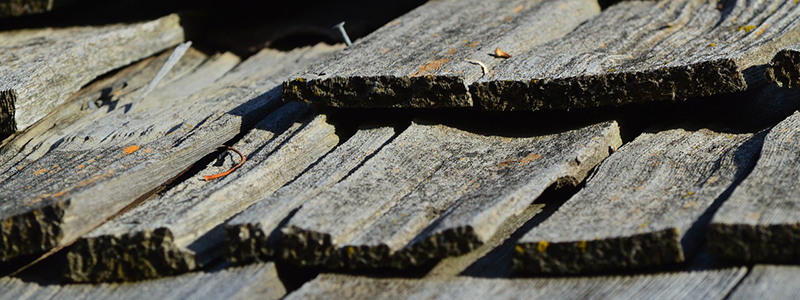
Wood Shingles/Shakes
Wood shingles and shakes are made, not surprisingly, from wood. While wood makes a great building material, it can be vulnerable to mold and decay. While there are different roof coatings that can help prevent this, be on the lookout for anything in the wood that looks warped, discolored, split, or otherwise unusual.
Flat Roof
Flat roofing may seem like it’s less likely to be damaged by wind, but it can still see significant damage. Identifying it is slightly different since it doesn’t typically use shingles. Instead, keep an eye out for any blistering or wrinkling that you see. This is typically a sign of wind uplift, which is when the air manages to get under the material and cause wind damage to a flat roof.
Also, look out for any cracks or tears that could cause leaks and other problems.
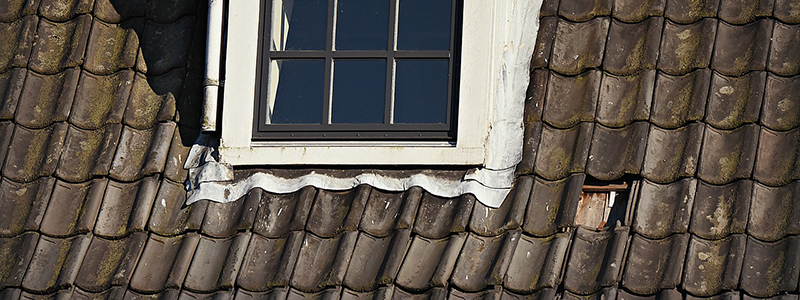
Damaged Flashing
Flashing is the metal material that is generally placed where the shingles meet a flat surface, such as at the start of the chimney. The primary point of this is to prevent water from getting under the shingles. But it is typically made out of flat, thin metal, so it can be particularly vulnerable to wind.
Tears or buckling in the flashing is one of the signs of wind damage to a roof that you shouldn’t ignore.
Crumbling Roofing Cement
Roofing cement is a solution that is often used to repair damaged sections of a roof. Pay particularly close attention to this if it’s on your roof, because if it seems to be crumbling, that is a big example of wind damage and it needs to be repaired or replaced.
How to Detect Wind Damage to Roof
After a storm, you can check for shingles on the ground and search your roof for missing shingles or other types of damage. High winds can damage shingles and tear them off altogether. It is also important to look for other warnings of aging, such as warping.
If it looks like the shingles are starting to curl or you start to see small holes, your roof is damaged and you are at risk for more damage in storms and freezes.
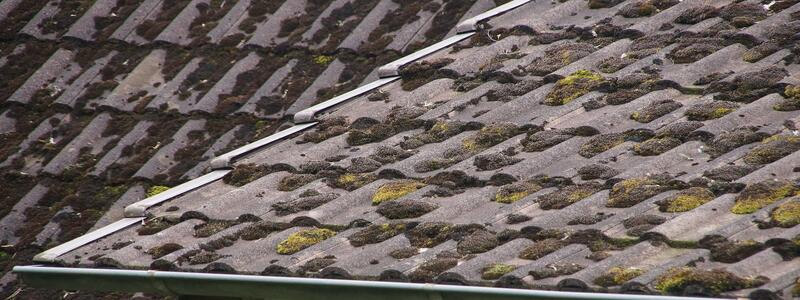
Perform an Outdoor Inspection
Check for missing and damaged shingles on your roof and around your home. While you are checking your roof, inspect the:
- Chimney
- Ventilation pipes
- Roof flashing
- Gutters
- Fencing
Please note that these are elements that can suffer great damage after strong winds and damaging storms.
Perform an Indoor Inspection
Moisture marks, brown, yellow, or grey stains, and peeling paint on walls and/or ceilings all indicate a damaged, leaking roof as well as damp rafters or leaks in your attic. If there is a sudden increase in energy costs, this could be a sign your roofing ventilation has been compromised.
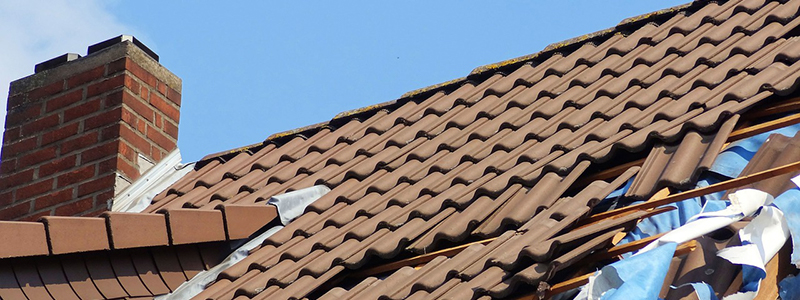
Will Insurance Cover Wind Damage to a Roof?
One of the first questions we typically hear in these situations is “will insurance cover wind damage to a roof?” The good news is that the answer is often yes!
Of course, it depends on the amount and type of damage, as well as the details of your insurance policy. But since this is a very common type of damage and it can lead to so many other problems, insurance companies tend to be more flexible about it.
We recommend contacting your agent to learn more about the wind damage to roof insurance claim details under your specific policy.
Insurance Coverage for Wind Damage to Roofs
Most wind damage caused by storms is usually included in homeowners’ insurance coverage. Depending on the type of coverage your insurance provides, it usually covers various types of damage caused by natural disasters. Policies usually protect you from damage caused by:
-
- Snowstorms
- Hail storms
- Tornadoes
- Hurricanes
Among some kinds of storms and weather events.
This windy April is breaking records in Colorado
This April Colorado has experienced record strong winds and more dry & windy days are expected by the end of the season. Mostly it is due to a pattern of storm systems north of Colorado, which is causing so many dry and windy days. This type of wind originated at the bottom of this storm pattern. This means that most of the moisture has been directed over the Front Range.
This was The Windiest April in Denver Since 1980
Data from DIA and Centennial Airport indicate that this April was the windiest in Denver in the last 30 years.
This April in Denver winds reached statistical records, making it the windiest April since the 1980s. This was caused by a stagnant storm pattern that was creating continuous waves of strong winds.
Since the first few days of April, winds have been recorded with an average speed of 13 mph, being this more than 2mph above the usual average within this period. At Centennials Airport, the average wind speed is 11.1 mph, making it the highest recorded since 1989.
April is on average the windiest month of the year in Denver and most of Colorado, however this year, the stagnant storm pattern has pushed these storms northward, causing Denver and much of Colorado to experience much drier and windier weather. This is a typical patter on April, but this year have brought more concern than usual.
Although this high wind season is almost over, it is never too late to inspect your roof, as it may have suffered damage, which is always best to repair as soon as possible to avoid further problems in the future.
Protecting your Property from Wind Damage in Advance
It is always good to anticipate the damage that high winds can cause, especially at this time of year when high winds can cause extensive damage to your property, especially to your roof. Here we share with you some tips to take in count to avoid some of the big damages that this extreme wheathers can cause:
- Use lighter landscaping materials.
- Keep trees trimmed away from the roof.
- Have your roof inspected by a professional as soon as possible (especially if you think there are wind-damaged shingles or other troubles)
Get Professional Help with Signs of Storm Damage to Roof
If you notice signs of wind damage to roof, call B&M Roofing at 303.443.5843. We provide roofing service and repair on everything from small residential roofs to complicated high-end commercial properties throughout Colorado and its surrounding areas. For more information, visit Quality Roofing Service and Repair for a complete list of services B&M Roofing provides.
How To Choose a Roof Color
A lot of homeowners may not think about this, but choosing the color of your roof can be a huge decision. Especially as there are so many color options out there, you want to make sure that you get it right. We at B&M Roofing have many years’ worth of knowledge and experience when it comes to roofs. We know what looks good and which colors will work better for your home than others. Luckily for you, we have put together the most popular and trending roof shingle colors that will help you know how to choose a roof color.
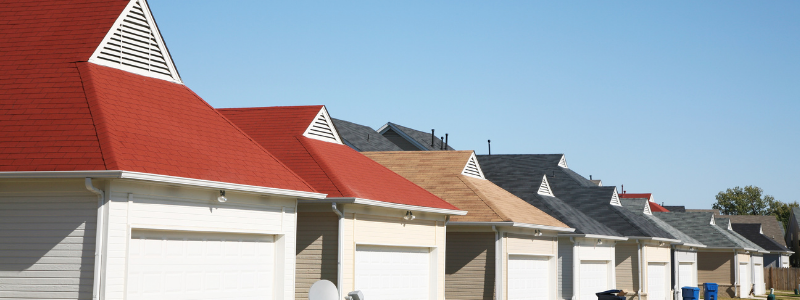
Why Does Choosing a Roof Color Matter?
Choosing the right color will provide your house with many benefits.
It improves the longevity of your home and roof.
It also makes your home look more attractive and pleasant to look at. This then adds to the curb appeal, that the right roof shingle color can give your home.
The main thing you want to do is to make the roof color fit in with the color of your home. Thus, you want the colors to complement one another. You want to contrast the siding of your home and the roof.
If you have light siding, then a dark roof is a great option. Sometimes it depends on the style of your home, which affects which color to go for. However, contrast is always really important, as it makes your home more appealing to look at.
Yet, if you are unsure what colors to go for, then start by looking at the roofs of the homes on your street. This will give you an idea of what colors work well in this neighborhood. As mentioned above, the climate in the area that you live in can have a huge influence on the color of the roof you should choose. You will notice that in warmer climates, the roofs are a lighter color. This is so the roof will naturally reflect the UV rays coming from the sun. This then makes the house easier to cool and remain cool.
While in areas with a colder climate, you will notice that they have dark-colored roofs. This is to help keep the heat in the home. Therefore, the right color can help you to save money on energy bills. This is because the right color will reflect sunlight away from your home, which means that it will keep your house cooler during the summer. It also helps to reduce the amount of heat that enters your home through windows or doors. Thus, it is a debate whether you should have a light or dark-colored roof. However, by selecting the right color, you will be able to lower your heating costs and allow you to become more energy efficient.
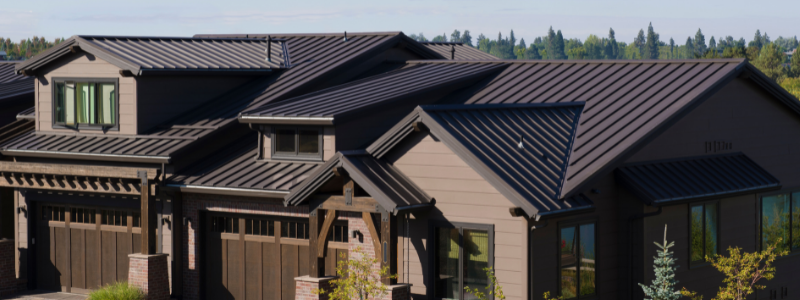
How to Choose a Roof Color Online
You may have chosen a color that you like, but you may be uncertain what the color will actually look like. Well, fortunately, you are in luck. Some roofing providers like CertainTeed and GAF both provide a service online that allows you to visualize the color on your roof. This way you can clearly see how the roof will look.
This way, you don’t have to fret about how the finished outcome will look. You can be certain that the color you are going to choose will work with the style of your home and sliding.
Traditional Roof Color Ideas
If you’re stuck on how to choose a roof color, you can always go with the classic colors. Below are some of the most traditional roof colors that never go out of style.
First up, we have the classic white color. White is one of the most popular colors to pick when it comes to roofs. This is because it looks great on almost any type of building. It blends well with just about everything, including brick walls, wooden fences, and even stone buildings.
Next up, we have the light gray color. Light gray is another very popular choice when it comes to choosing a roof color. Not only does it look good, but it also provides a fresh new feel to any room. Plus, it has an amazing ability to brighten up any space.
Dark gray is another very popular option when it comes to selecting the perfect roof color. It goes perfectly with modern homes, and it also looks fantastic with traditional styles.
Finally, we have the black color. Black is another very popular choice for roofing material. As it is such a strong color, it makes a statement wherever it is used. It is especially effective when paired with other darker colors, like brown or navy blue.
Trending Roof Colors in 2022
If you’re wondering how to choose a roof color, looking at the latest trends might help.
Trends for the exterior of the home are always changing. However, you want to decide on colors that will stay in style for a few years to come.
We have noticed that some of the most popular roof shingle colors for this year so far are the following (and they’re probably going to stick around for a while):
Light Brown – Different hues of light brown, such as desert, sand, or taupe, have become quite popular.
Dark Brown – The hues of tree bark, autumnal brown, and weathered wood are very sought after at the moment.
Blue – Hues of blue such as blue-green, navy, or sky are very popular.
Green – The hues of green known as Moss, Forest, and Hunter are all extremely popular right now.
Off White – White has always been popular, but off-white hues like khaki, beige, tan, and stone are being preferred.
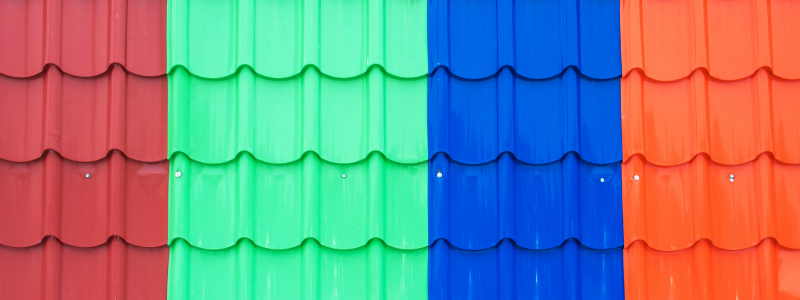
HOA Regulations with Roof Color
The Homeowners Association (HOA) may have strict rules and regulations about the upkeep of your home. The purpose of the rules set by the HOA is to help maintain the aesthetics and style of the neighborhood.
As a result, you will find that if you want to change your roof, you will need to buy and seek approval from the HOA. In their regulations, it may say what colors are allowed in your neighborhood, but you must still seek approval. If you do not seek approval for the color, then you may face fines and charges for going against the HOA. So, your HOA might influence how to choose a roof color.
If you live in a condo or townhouse, you may be able to get permission to change the roof color without seeking approval from the HOA. However, if you own a single-family house, you will need to seek approval from the HOA.
Once you have made your decision, then we at B&M Roofing can help your dream roof become a reality.
